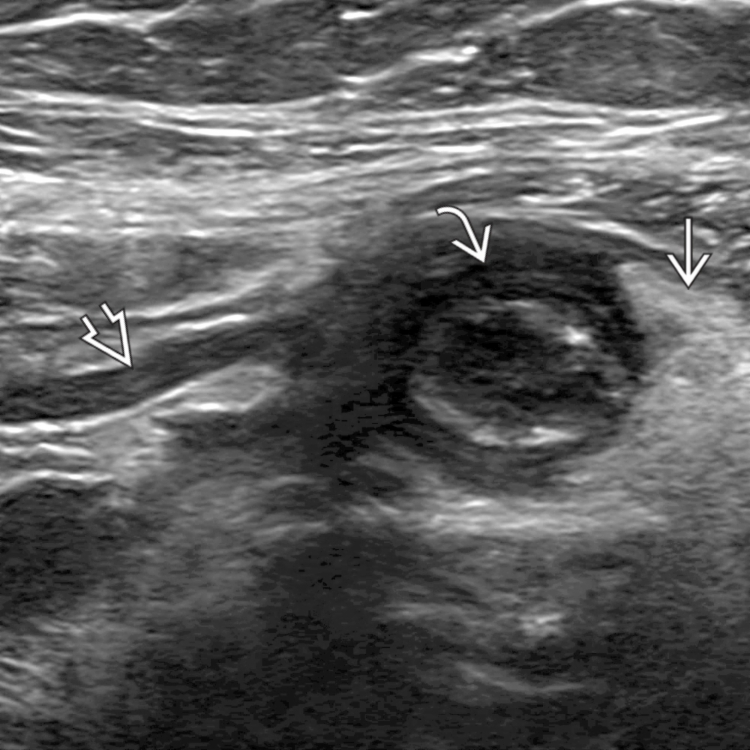KEY FACTS
Terminology
- •
Acute inflammation of appendix, which may be precipitated by obstruction of lumen
Imaging
- •
Blind-ended, aperistaltic, thick-walled tubular structure with gut signature
- •
Length ranges between 2-20 cm; base between ileocecal valve and cecal apex
- •
Noncompressible appendix with outer diameter ≥ 7 mm; single wall thickness > 3 mm
- ○
Increased caliber alone is not reliable indicator
- ○
- •
Mural stratification seen in early stages, absent in gangrenous appendicitis
- •
Periappendiceal edema seen as echogenic fat
- •
Additional findings: Appendicolith, periappendiceal fluid
- •
Perforated appendicitis: Periappendiceal abscess or phlegmon, free appendicolith
- •
Increased vascularity on color Doppler
- •
US: 1st choice in children, thin young adults, and pregnancy
- •
CT performed for patients with inconclusive US, if complications suspected, or in obese patients
- •
MR: Useful in pregnancy
Top Differential Diagnoses
- •
Appendiceal mucosal lymphoid hyperplasia
- •
Appendicular mucocele
- •
Mesenteric adenitis
- •
Cecal diverticulitis/ileocolitis
- •
Appendiceal/cecal carcinoma
- •
Pelvic inflammatory disease
- •
Segmental omental infarction/epiploic appendagitis
- •
Meckel diverticulitis
Pathology
- •
Can be obstructive (appendicolith) or nonobstructive
Clinical Issues
- •
All ages affected, M = F
- •
Periumbilical pain migrating to RLQ; peritoneal irritation at McBurney point; atypical signs in 1/3 of patients
- •
Anorexia, nausea, vomiting, diarrhea, fever
Scanning Tips
- •
Scan over area of pain, use graded compression and color/power Doppler, consider decubitus positioning
- •
Use combination of linear and curved transducers
- •
Transvaginal US: For visualization of pelvic appendix
 . The direction of the tip of the appendix and length can vary.
. The direction of the tip of the appendix and length can vary.
 appearance due to the preservation of mural stratification. Note the surrounding echogenic, inflamed fat
appearance due to the preservation of mural stratification. Note the surrounding echogenic, inflamed fat  and a thickened, inflamed parietal layer
and a thickened, inflamed parietal layer  of the peritoneum, which is in contact with the inflamed appendix.
of the peritoneum, which is in contact with the inflamed appendix.










